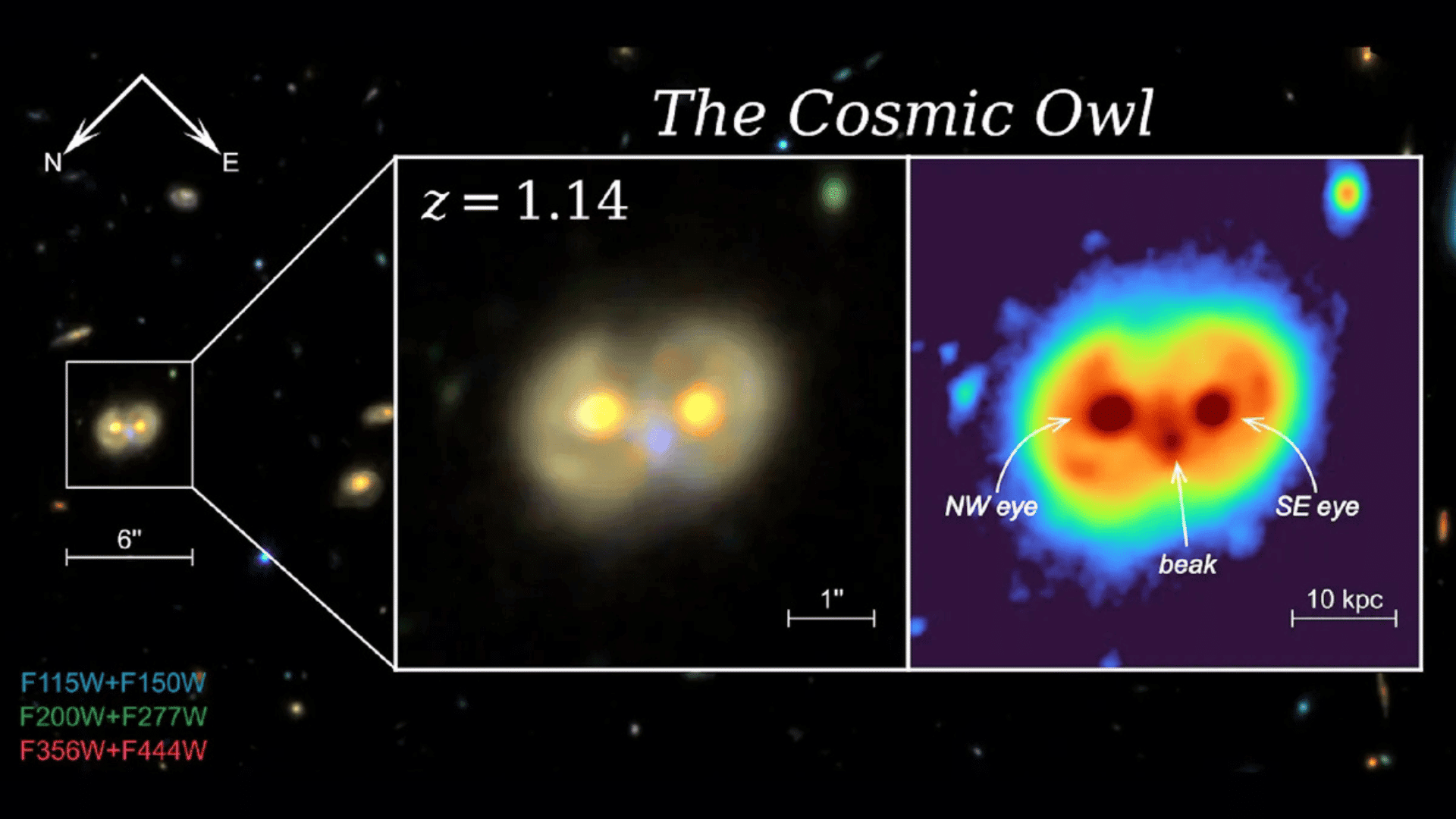A new study used James Webb Space Telescope (JWST) data to locate a “cosmic owl,” or a rare phenomenon formed from two colliding ring galaxies. The space object is billions of light-years away, and its discovery may help researchers study the evolutionary processes of galaxies.
Rare “Cosmic Owl” Phenomenon

Ring galaxies are formed when a small galaxy moves through a larger one, pushing stars and gas through shock waves into a ring around a central core. These rare galaxies account for approximately 0.01% of all known galaxies.
“We were analyzing all radio sources using public JWST data in a very well-studied region called the COSMOS field,” Mingyu Li, a doctoral student in the Department of Astronomy at Tsinghua University in China and the new study’s first author, stated to Live Science.
According to Li, JWST’s high-resolution imaging capabilities allowed the team to immediately spot the colliding galaxies. The two galaxies are similar, each with a diameter of approximately 26,000 light years.
The “beak” of the “cosmic owl”, or the collisional front between the two galaxies, contains a large clump of molecular gas, according to data from the Atacama Large Millimeter/submillimeter Array (ALMA) in Chile. The ALMA data also placed the owl’s redshift at 1.14, or approximately 11 billion light-years from us.
Researchers estimate that this collision took place approximately 38 million years ago. According to Li, the bursts of star formation triggered by the galactic collision and radio jets in the beak region “could be a crucial and previously underappreciated mechanism for the rapid and efficient conversion of gas into stars.”
The “cosmic owl” could, thereby, help us learn more about how galaxies built their stellar mass so rapidly as the universe was forming. Further study of the galaxies could also allow researchers to understand the conditions that would lead to their formation.







